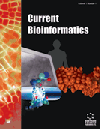- Home
- A-Z Publications
- Current Bioinformatics
- Previous Issues
- Volume 16, Issue 5, 2021
Current Bioinformatics - Volume 16, Issue 5, 2021
Volume 16, Issue 5, 2021
-
-
Deep Learning in Disease Diagnosis: Models and Datasets
More LessAuthors: Deeksha Saxena, Mohammed H. Siddiqui and Rajnish KumarBackground: Deep learning (DL) is an Artificial neural network-driven framework with multiple levels of representation for which non-linear modules combined in such a way that the levels of representation can be enhanced from lower to a much abstract level. Though DL is used widely in almost every field, it has largely brought a breakthrough in biological sciences as it is used in disease diagnosis and clinical trials. DL can be club Read More
-
-
-
A Roadmap to Sequence Assembly Evaluation Tools
More LessAuthors: Sara El-Metwally, Eslam Hamouda and Mayada TarekThe assembly evaluation process is the starting step towards meaningful downstream data analysis. We need to know how much accurate information is included in an assembled sequence before going further to any data analysis stage. Four basic metrics are targeted by different assembly evaluation tools: contiguity, accuracy, completeness, and contamination. Some tools evaluate these metrics based on compar Read More
-
-
-
A Comparative Analysis of Biological Data Integration Systems Famous for Data Exploitation and Knowledge Discovery
More LessAuthors: Omer Irshad and Muhammad U. G. KhanIntegrating heterogeneous biological databases for unveiling the new intra-molecular and inter-molecular attributes, behaviors, and relationships in the human cellular system has always been a focused research area of computational biology. In this context, a lot of biological data integration systems have been deployed in the last couple of decades. One of the prime and common objectives of all these systems is to better fa Read More
-
-
-
Mechanism of Actions of Dexamethasone Against COVID-19 Predicted by Alpha Shape Analysis of Binding Sites
More LessAuthors: Mengxu Zhu, Avirup Ghosh and Hong YanBackground: COVID-19 emerged in late 2019 and became a pandemic disease with severe mortality and morbidity. No specific remedy exists at present, but some drugs, such as Dexamethasone, have shown clinical benefits against the causative agent, the SARS-CoV-2 virus. Objective: To analyze the binding affinity between drugs and an SARS-CoV-2 protein through geometrical methods and to study the theoretical effecti Read More
-
-
-
CSBPI_Site: Multi-Information Sources of Features to RNA Binding Sites Prediction
More LessAuthors: Lichao Zhang, Zihong Huang and Liang KongBackground: RNA-binding proteins establish posttranscriptional gene regulation by coordinating maturation, editing, transport, stability, and translation of cellular RNAs. Immunoprecipitation experiments could identify the interaction between RNA and proteins, but they are limited due to the experimental environment and material. Therefore, it is essential to construct computational models to identify the function sites. O Read More
-
-
-
iTSP-PseAAC: Identifying Tumor Suppressor Proteins by Using Fully Connected Neural Network and PseAAC
More LessAuthors: Muhammad Awais, Waqar Hussain, Nouman Rasool and Yaser D. KhanBackground: The uncontrolled growth due to accumulation of genetic and epigenetic changes as a result of loss or reduction in the normal function of Tumor Suppressor Genes (TSGs) and Prooncogenes is known as cancer. TSGs control cell division and growth by repairing DNA mistakes during replication and restrict the unwanted proliferation of a cell or activities, that are part of tumor production. Objectives: This study aims to Read More
-
-
-
MDAPlatform: A Component-based Platform for Constructing and Assessing miRNA-disease Association Prediction Methods
More LessAuthors: Yayan Zhang, Guihua Duan, Cheng Yan, Haolun Yi, Fang-Xiang Wu and Jianxin WangBackground: Increasing evidence has indicated that miRNA-disease association prediction plays a critical role in the study of clinical drugs. Researchers have proposed many computational models for miRNA-disease prediction. However, there is no unified platform to compare and analyze the pros and cons or share the code and data of these models. Objective: In this study, we developed an easy-to-use platform ( Read More
-
-
-
Identification of Biomarkers and Functional Modules from Genomic Data in Stage-wise Breast Cancer
More LessBackground: Breast cancer is the most common cancer in women across the world, with high incidence and mortality rates. Being a heterogeneous disease, gene expression profiling based analysis plays a significant role in understanding breast cancer. Since expression patterns of patients belonging to the same stage of breast cancer vary considerably, an integrated stage-wise analysis involving multiple samples is expecte Read More
-
-
-
Gene Selection in Multi-class Imbalanced Microarray Datasets Using Dynamic Length Particle Swarm Optimization
More LessAuthors: R. D. Priya and R. SivarajBackground: Microarray gene expression datasets usually contain a large number of genes that complicate further operations like classification, clustering and other kinds of analysis. During the classification process, the identification of salient genes is a brainstorming task and needs a careful selection. Methods: The classification of multi-class datasets is more critical when compared with binary classification. When ther Read More
-
-
-
Modeling Hereditary Disease Behavior Using an Innovative Similarity Criterion and Ensemble Clustering
More LessAuthors: Musa Mojarad, Fariba Sarhangnia, Amin Rezaeipanah, Hamin Parvin and Samad NejatianBackground: Today, there are various theories about the causes of hereditary diseases, but doctors believe that both genetic and environmental factors play an essential role in the incidence and spread of these diseases. Objective: In order to identify genes that are cause the disease, inter-cell or inter-tissue communications must be determined. The inter-cells or inter-tissues interaction could be illustrated by applying the ge Read More
-
Volumes & issues
-
Volume 20 (2025)
-
Volume 19 (2024)
-
Volume 18 (2023)
-
Volume 17 (2022)
-
Volume 16 (2021)
-
Volume 15 (2020)
-
Volume 14 (2019)
-
Volume 13 (2018)
-
Volume 12 (2017)
-
Volume 11 (2016)
-
Volume 10 (2015)
-
Volume 9 (2014)
-
Volume 8 (2013)
-
Volume 7 (2012)
-
Volume 6 (2011)
-
Volume 5 (2010)
-
Volume 4 (2009)
-
Volume 3 (2008)
-
Volume 2 (2007)
-
Volume 1 (2006)
Most Read This Month
Article
content/journals/cbio
Journal
10
5
false
en


